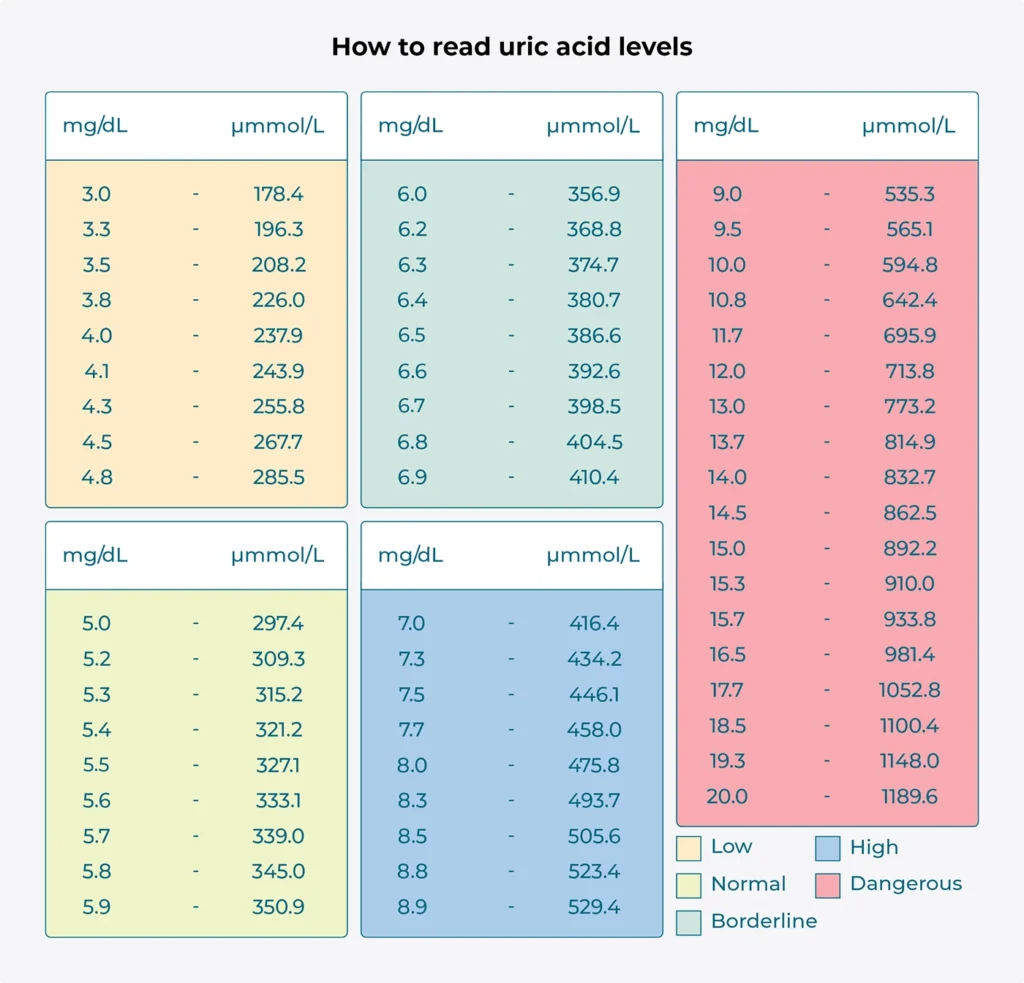
Gout diagnosis is usually made based on patient symptoms and the appearance of the affected joint. Tests helping to make the correct diagnose for gout may include:
This test uses the needle to draw fluid from your affected joint. Urate crystals may be visible when the fluid is examined under a microscope.
Aim of this test is to measure the levels of uric acid in patient blood. Please note that the blood test results can be misleading as some people have high uric acid levels, but never experience gout. On the other hand some people have signs and symptoms of gout, but don’t have unusual levels of uric acid in their blood.
Joint X-rays can be helpful to rule out other causes of joint inflammation.
This test uses sound waves to detect urate crystals in joints or in tophi.
This test combines X-ray images taken from many different angles to visualize urate crystals in joints.
Measuring uric acid levels is vital to managing patients health. Abnormal uric acid levels usually do not have any obvious symptoms, but too low uric acid levels (hypouricemia) can be indicative of other underlying health conditions, and too high uric acid levels (hyperuricemia) over time can lead to gout or kidney stones.

Normal uric acid levels
Most uric acid dissolves in the blood then passes through the kidneys and leaves the body in urine. Some uric acid is eliminated through the bowels.
It is considered normal to have a uric acid level
of up to 7.0 mg/dL. Above this level, uric acid can come out of solution and form crystals. When treating gout, aim for the uric acid level is to be less than 6.0 mg/dL.
High uric acid levels
If there is more uric acid than the kidneys can get rid of, a condition called hyperuricemia. This can lead to the development of urate crystals in the joints and other tissues. When these crystals accumulate, they can cause a painful attack of gout or a flare. Not everyone with hyperuricemia will get gout—but once gout develops, it is likely to return, unless treated with medicine to lower uric acid levels.

How to treat
hyperuricemia?